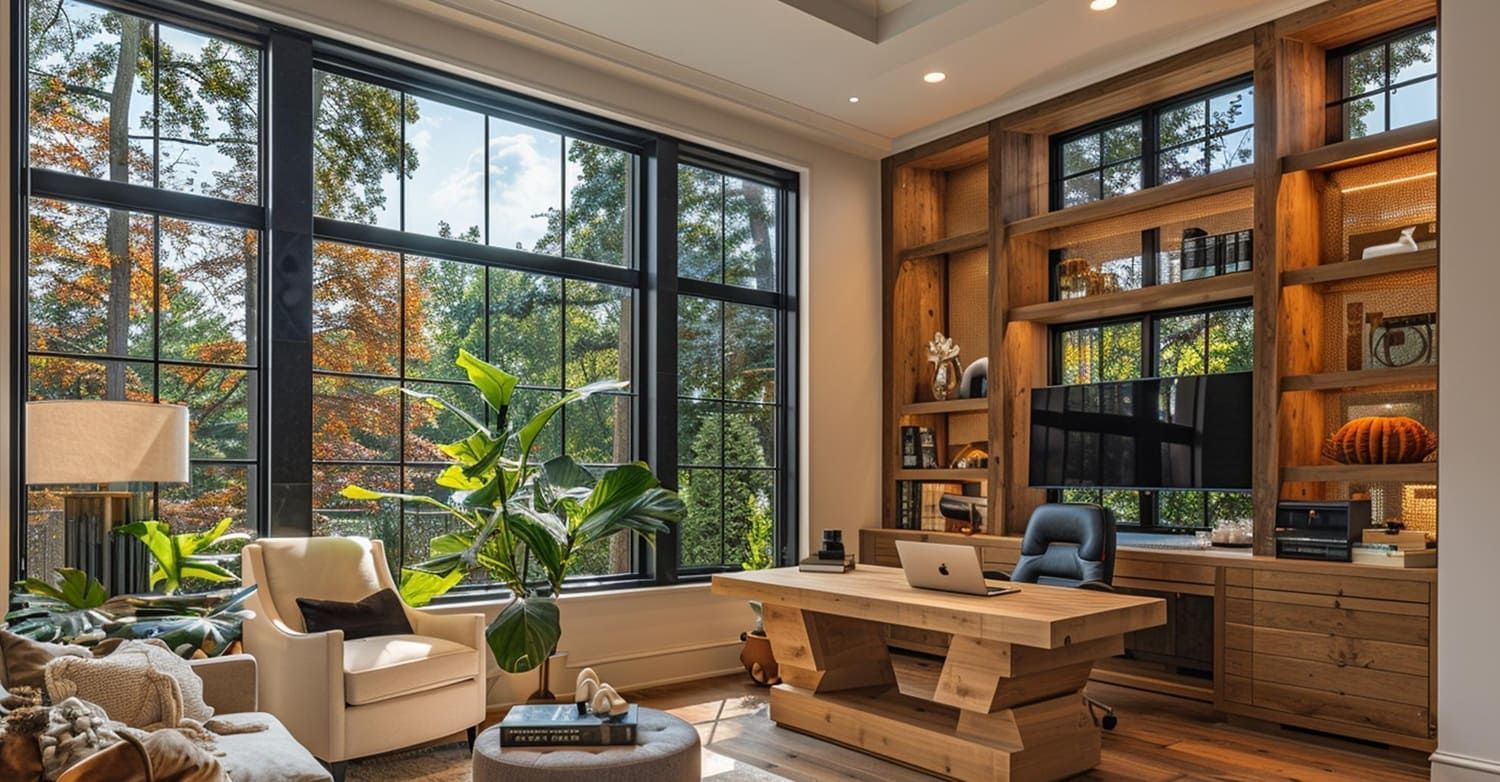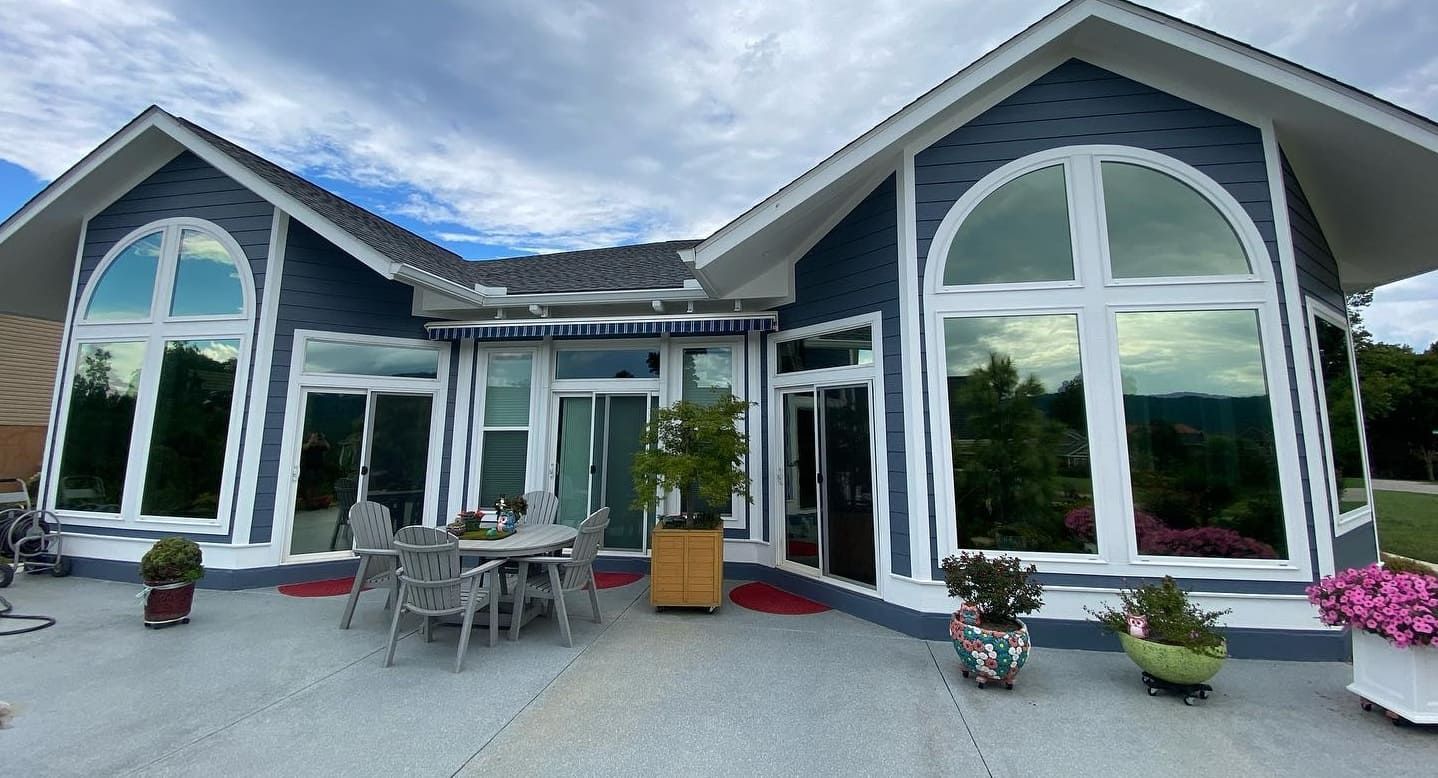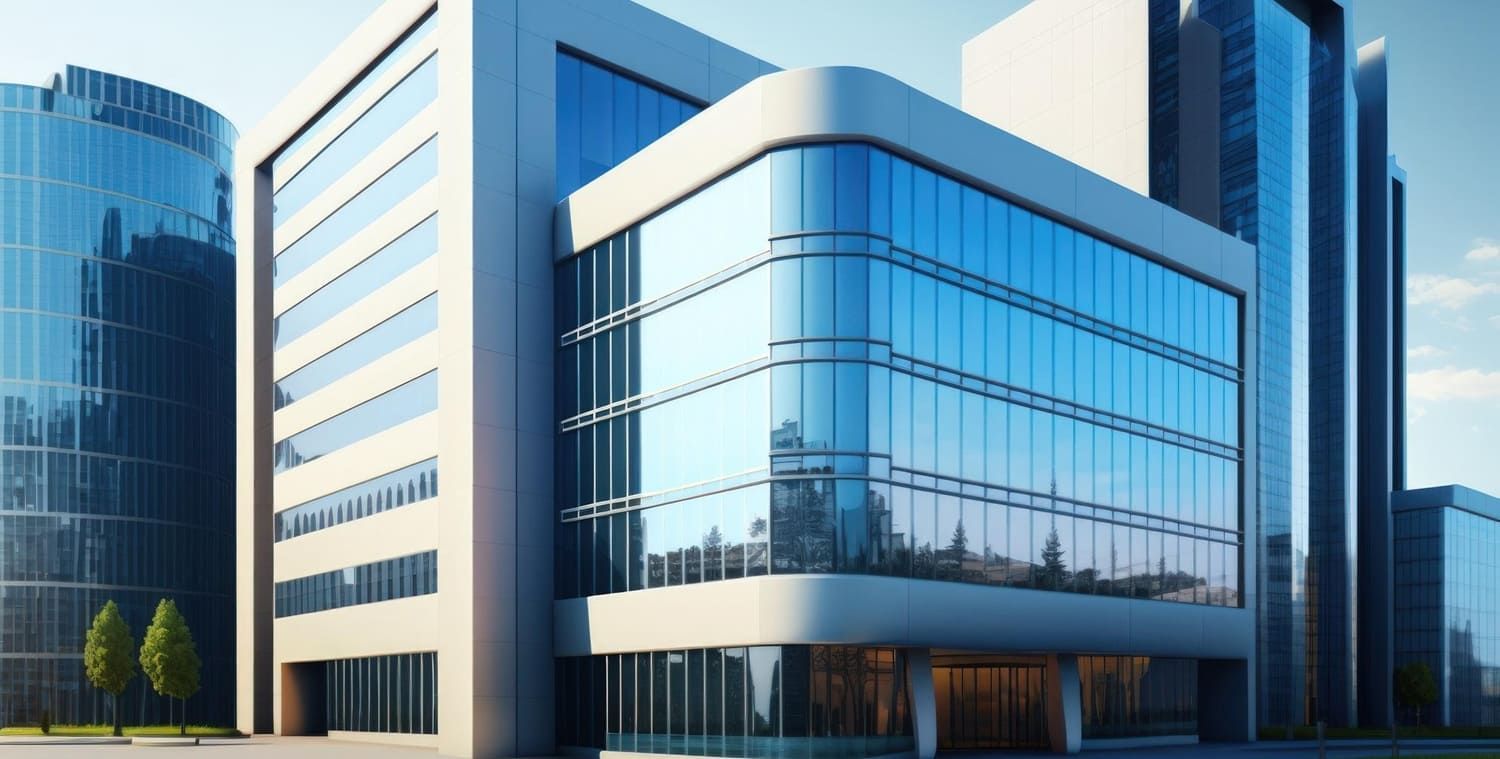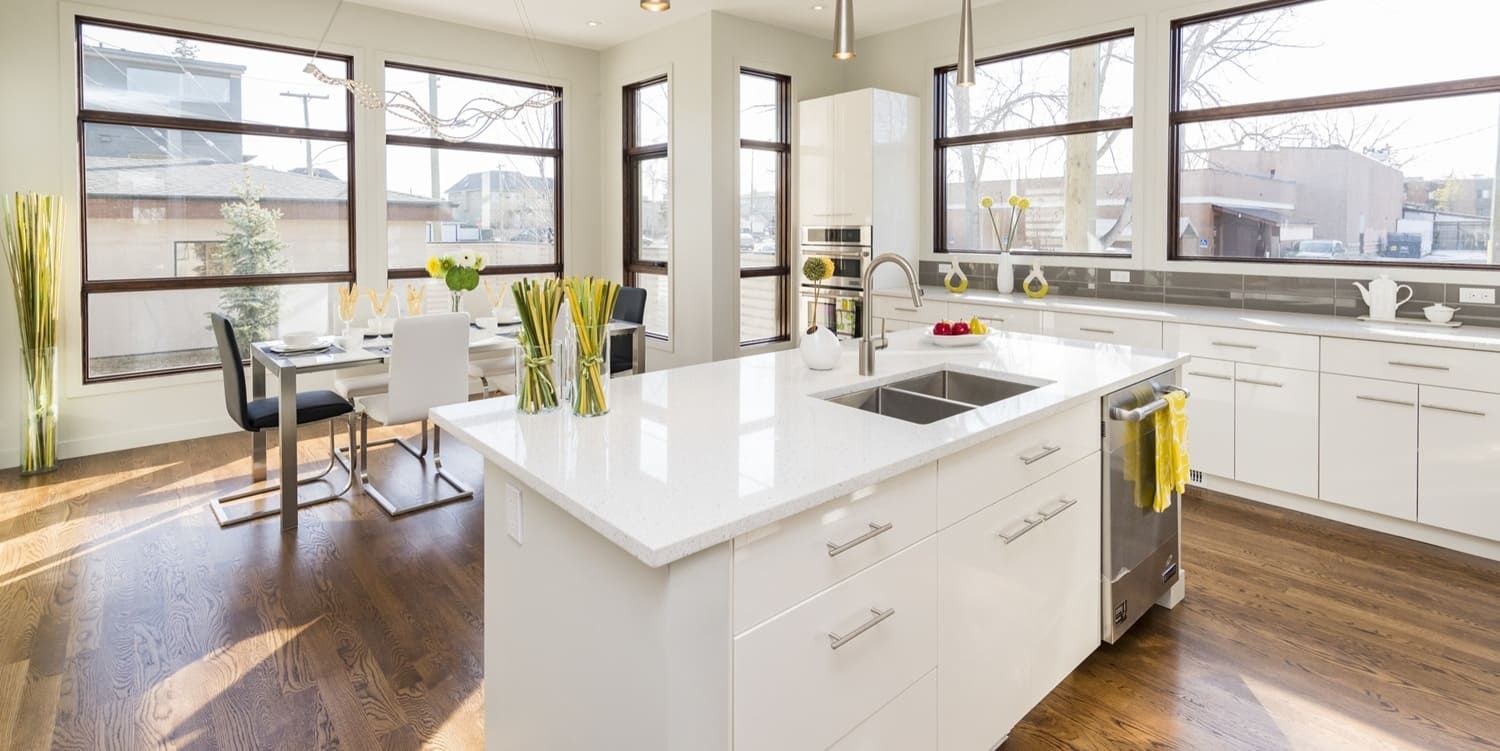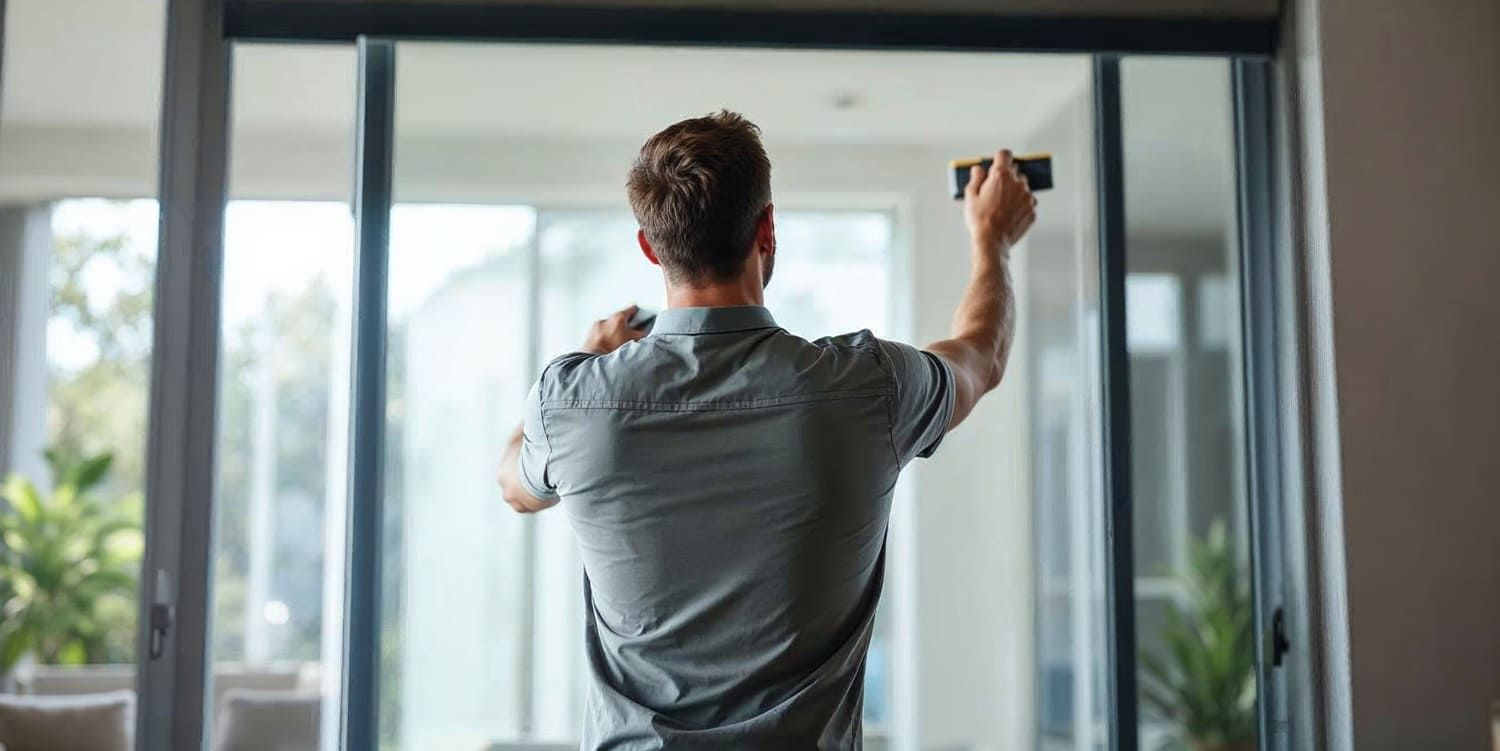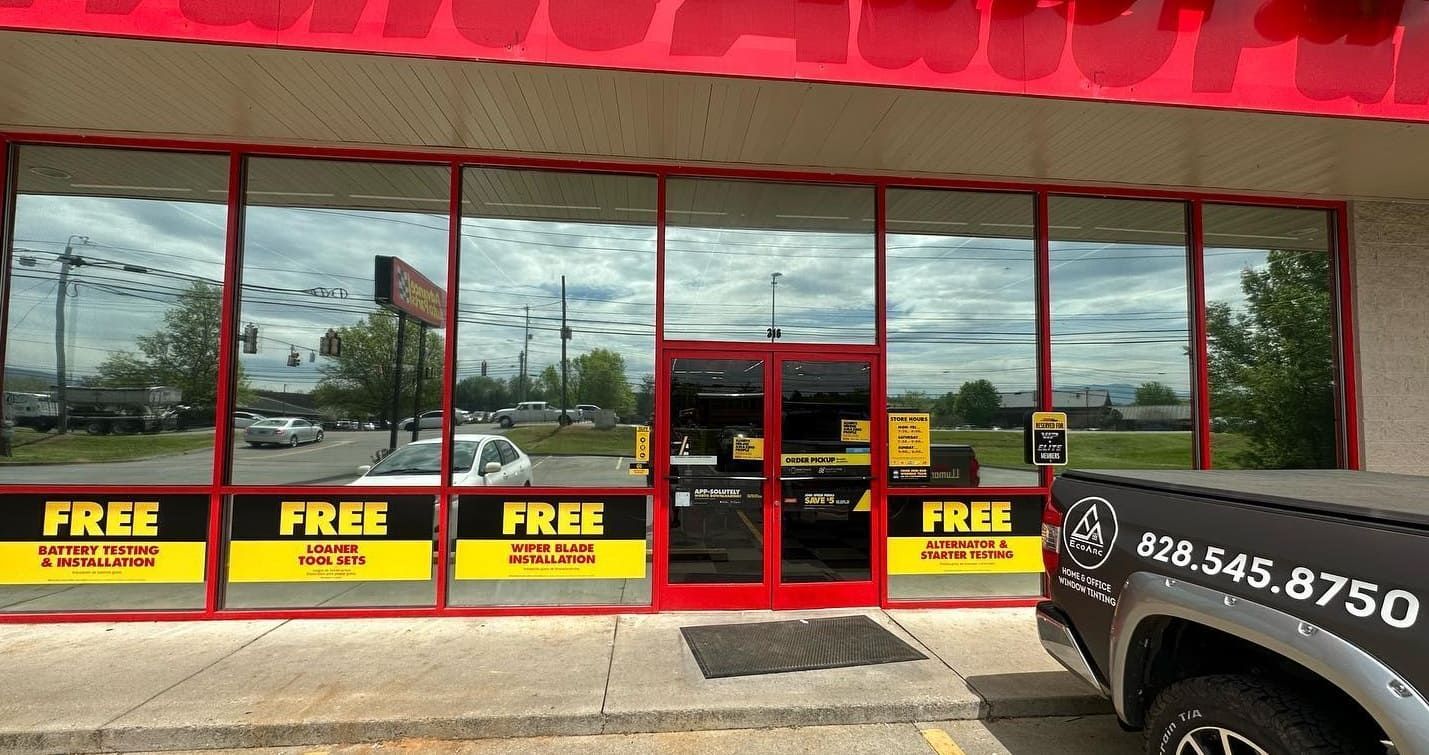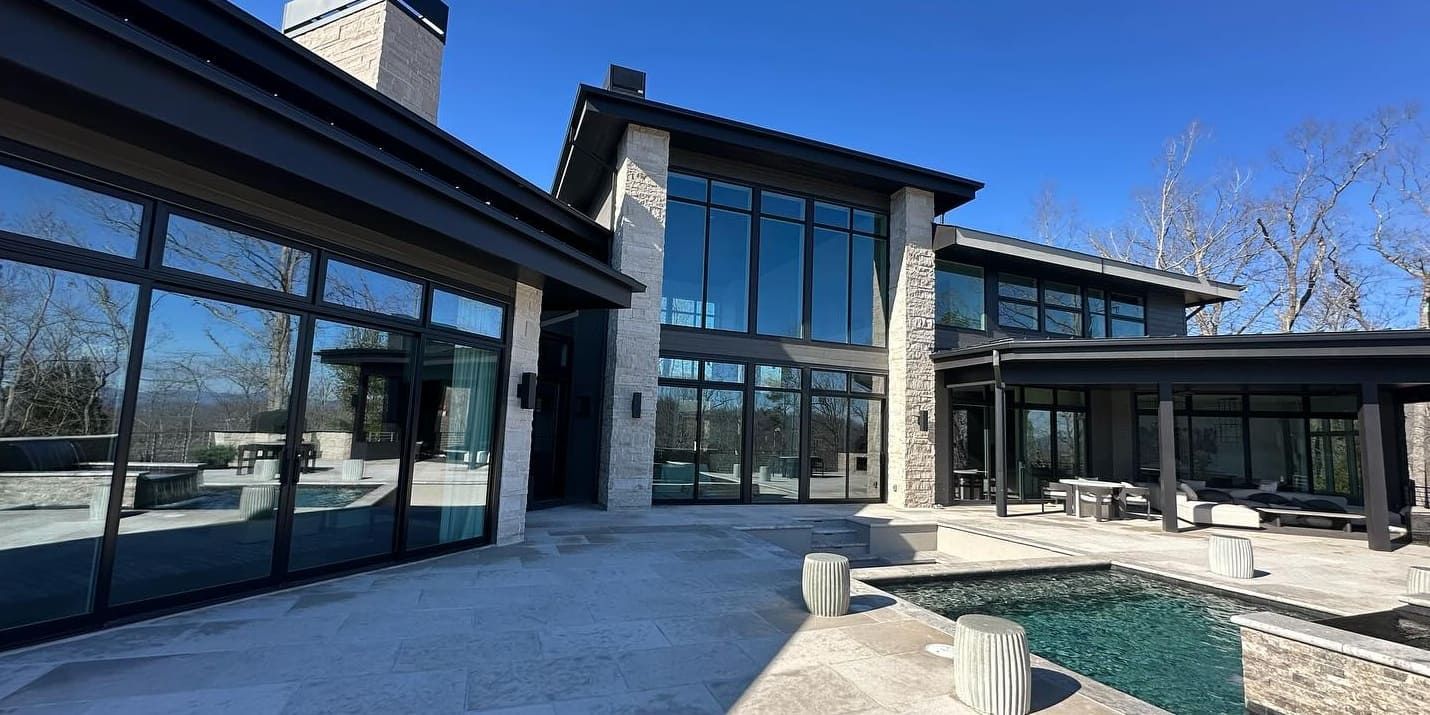Sun Damage Protection: Why Your Home Windows Need Film
Up to 99 percent of harmful UV rays stream through untreated windows, accelerating interior fading and raising health risks. Home window tinting applies a thin, transparent film that blocks ultraviolet radiation, reduces solar heat gain and enhances comfort while preserving décor. This guide explains sun damage mechanics and interior deterioration, details how window film deflects UV and heat, compares film types, and shows how EcoArc Home & Office Window Tinting delivers expert residential installations across Asheville, Knoxville, and Greenville. Readers will learn why UV protection home window film pays for itself and how to secure a free estimate.
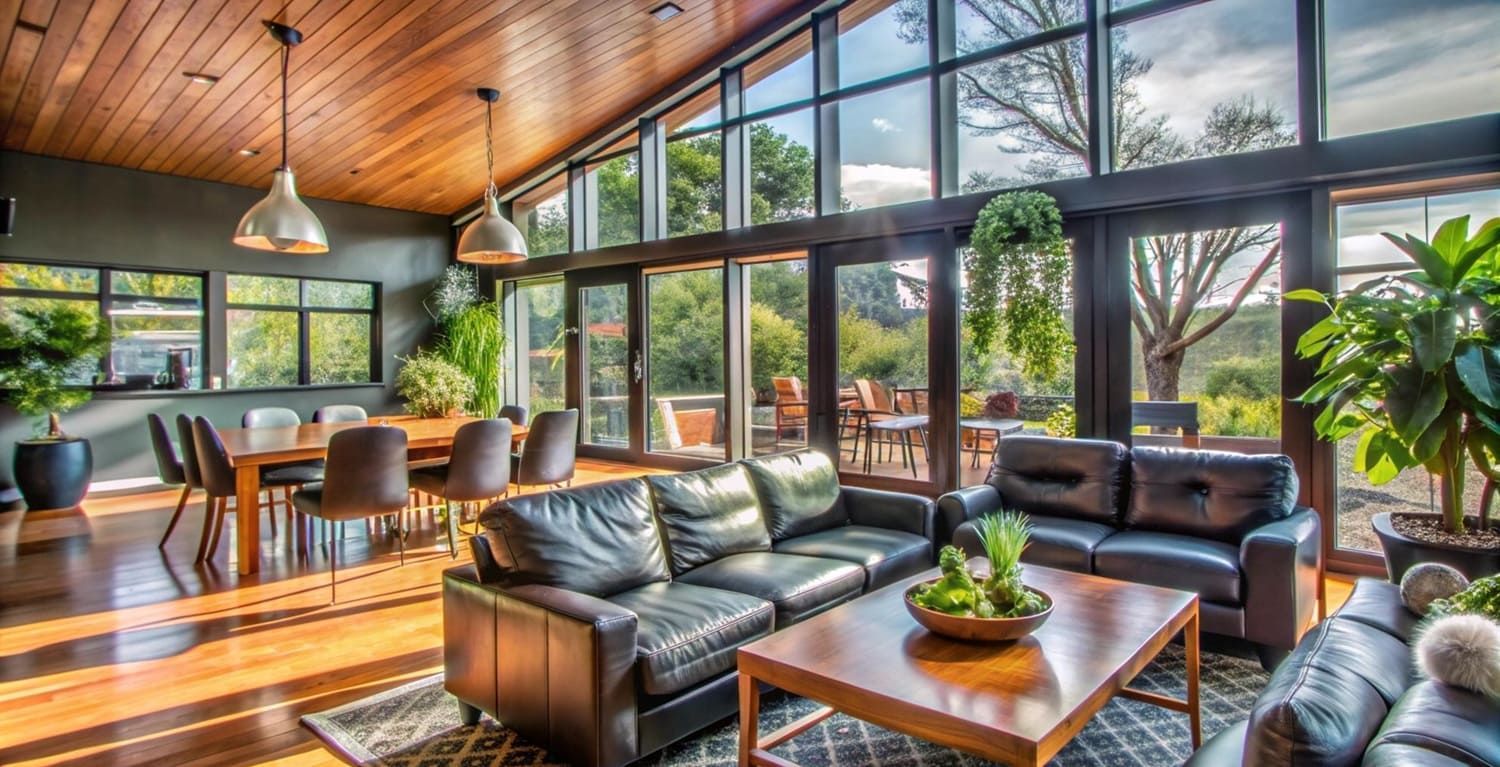
What Is Sun Damage and How Does It Affect Your Home and Health?
Sun damage occurs when ultraviolet radiation and infrared heat penetrate glass, triggering material degradation and health hazards. Exposure to UV-A and UV-B rays breaks down dyes, weakens fibers in carpets and fabrics, and promotes skin aging and tumor growth. For example, unprotected hardwood floors can discolor within months of direct sunlight. Understanding damage pathways clarifies why film installation becomes an essential home investment.
UV Radiation and Interior Damage
Ultraviolet (UV) radiation is a significant factor in the degradation of materials, causing fading and damage to fabrics, carpets, and other interior elements. This damage is a result of the breakdown of dyes and fibers when exposed to UV-A and UV-B rays.
- Environmental Protection Agency (EPA), "Protect Your Home from UV Rays" (2024)
This research supports the article's claims about the damaging effects of UV rays on home interiors and the need for protection.
How Do UV Rays Penetrate Home Windows to Cause Damage?
UV-A and UV-B rays pass through standard glass by refracting off its surface and scattering inside rooms. This process delivers up to 50 percent of UV-A, which ages skin and fades fabrics, and about 30 percent of UV-B, which induces sunburn and cellular damage. Sunlight entering through untreated windows steadily degrades pigments in upholstery and increases indoor ultraviolet exposure.
What Are the Common Effects of Sun Damage on Interiors and Skin?
Homeowners notice three primary signs of sun damage:
- Faded fabrics and carpets lose vibrancy and cost thousands to replace.
- Hardwood and laminate flooring develop bleached patches and cracks.
- Occupants experience accelerated skin aging, wrinkles and elevated risk of skin cancer.
Why Is Protecting Your Home from Sun Damage Essential?
Shielding windows from UV and heat prevents irreversible material breakdown and reduces long-term maintenance costs. It also lowers occupants’ cumulative ultraviolet exposure, aligning with The Skin Cancer Foundation’s recommendation to install protective glazing. Installing window film thus safeguards property value and supports long-term family wellness.
How Does Window Film Provide Effective Sun Damage Protection?
Window film is a multi-layer polyester sheet coated with UV-blocking agents that attaches invisibly to glass. It deflects and absorbs solar radiation before it reaches interiors, maintaining visible light while rejecting harmful wavelengths. This mechanism creates an invisible barrier that preserves surfaces and occupants.
What Is Window Film and How Does It Work to Block UV Rays?
Window film integrates ceramic or metalized nanoparticles within its adhesive layers to intercept ultraviolet photons. These particles convert UV energy into insignificant heat and reflect it back outside, effectively stopping up to 99 percent of UV-A and UV-B before they penetrate glass. Homeowners benefit from clear views without sacrificing protection.
How Much UV Protection Does Window Film Offer for Homes?
High-performance films block 99 percent or more of ultraviolet radiation, meeting Skin Cancer Foundation criteria for effective sun safety. By preventing UV-A and UV-B penetration, tinted glazing reduces fading in furniture and flooring and cuts occupants’ daily UV exposure to near-zero indoors.
How Does Window Film Prevent Fading of Furniture and Flooring?
By eliminating UV rays at the glass interface, window film stops photochemical reactions that break down dyes and polymers in fabrics, leathers and wood finishes. Over time, protected interiors maintain original color and structural integrity, extending the lifespan of décor investments by years.
What Are the Health Benefits of UV Protection Window Film?
UV-blocking film reduces skin cancer risk and prevents photoaging by removing indoor ultraviolet exposure. Families enjoy lower rates of sunburn and diminished cumulative DNA damage. Medical authorities endorse protective glazing as a simple, continuous barrier to harmful radiation.
How Can Window Film Reduce Heat and Lower Your Energy Bills?
Window film lowers solar heat gain by reflecting infrared radiation, cutting cooling loads and shortening air-conditioning runtimes. Homes stay up to 10°F cooler near windows, which reduces HVAC energy consumption and delivers measurable utility savings over time.
Energy Savings from Window Film
Window film can significantly reduce energy consumption by blocking solar heat gain. This leads to lower cooling costs and a reduction in greenhouse gas emissions. The amount of savings varies based on climate and home size.
- U.S. Department of Energy, "Energy Efficient Windows" (2023)
This source provides evidence for the energy-saving benefits of window film, as discussed in the article.
How Does Window Film Reduce Solar Heat Gain in Residential Windows?
Films reject solar energy through reflective coatings or infrared-absorbing layers that prevent heat from entering living spaces. Reflective films bounce back sunlight, while spectrally selective films absorb heat and dissipate it externally. Both mechanisms lessen indoor heat buildup and maintain comfortable temperatures.
What Are the Estimated Energy Savings from Home Window Tinting?
The table below summarizes annual savings for typical homes after installing heat-control film:
| Home Size (sq ft) | Climate Region | Estimated Annual Savings |
|---|---|---|
| 1,500 | Asheville, NC | $180 (12%) |
| 2,000 | Knoxville, TN | $240 (15%) |
| 2,500 | Greenville, SC | $300 (18%) |
Which Types of Window Film Offer the Best Heat Reduction?
- Ceramic Films feature nonconductive ceramic particles that block heat while remaining virtually clear.
- Metalized Films use thin metallic layers to reflect infrared energy but may interfere slightly with electronics.
- Dyed Films absorb heat with organic dyes, offering a budget option but lower overall performance.
How Long Does Heat-Reducing Window Film Typically Last?
Quality ceramic and metalized films last 15–20 years under normal conditions, backed by manufacturer warranties. Dyed films generally maintain performance for 7–10 years before gradual degradation may occur.
How Does Window Film Improve Comfort by Reducing Glare?
By diffusing direct sunlight and reflecting high-intensity rays, window film eliminates glare hotspots on screens and surfaces. This balance preserves natural daylight while preventing eye strain and enhancing visual clarity throughout living spaces.
What Causes Glare in Home Windows and How Does It Affect You?
Glare arises when concentrated light reflects off glossy surfaces or computer displays, causing discomfort and reducing visibility. Prolonged exposure leads to headaches, neck strain and diminished productivity during work or study.
How Does Window Film Minimize Glare While Maintaining Natural Light?
Films incorporate micro-etchings that scatter incoming light, softening intensity without darkening rooms. This scattering effect keeps interiors bright and evenly lit while removing harsh reflections that strain eyes.
Which Window Films Are Best for Glare Reduction in Homes?
Spectrally selective and ceramic glare-control films offer the optimal balance of reduced reflectivity and high visible light transmission (VLT), delivering clear views with minimal color shift.
How Does Window Film Enhance Privacy and Security for Your Home?
Tinted and frosted films obscure interior views while allowing outward visibility, offering daytime and nighttime privacy. Security films add a tear-resistant layer that holds glass fragments in place if breakage occurs, deterring intruders and reducing injury risk.
What Levels of Privacy Can Window Film Provide During Day and Night?
Films range from light tint to opaque frost:
- Daytime Privacy Films maintain outward views but block interior sights from street level.
- Nighttime Privacy Films combine reflective surfaces and low VLT to prevent indoor visibility under interior lighting.
How Does Window Film Increase Glass Resistance and Home Security?
Security films bond to glass with strong adhesives, creating a laminated layer that resists shattering. In attempted break-ins, film-reinforced panes hold together, delaying entry and giving residents time to respond.
Are There Real Examples of Security Benefits from Window Tinting?
In one Asheville installation, a security film prevented forced entry despite a pane shattering under impact. The intruder abandoned the attempt when the glass remained intact, underscoring film’s role in home defense.
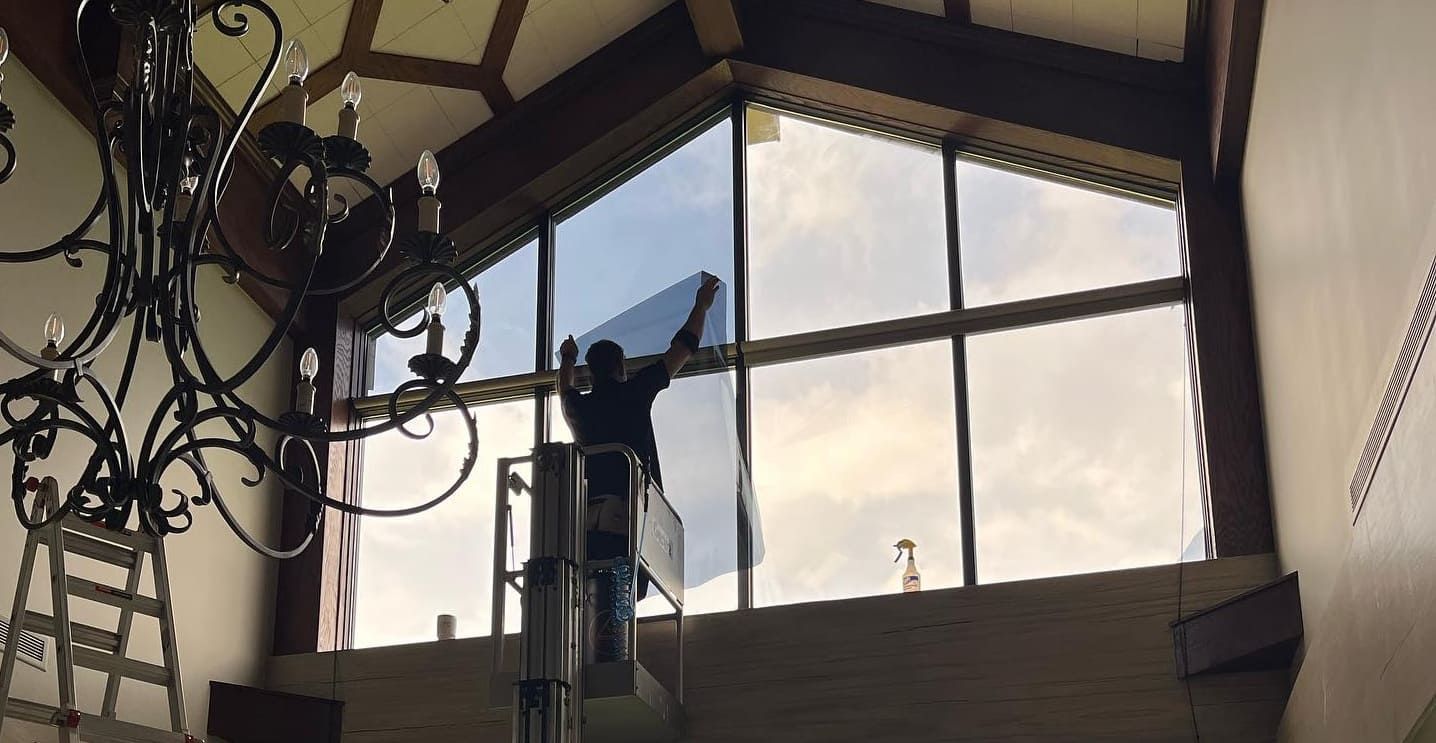
What Types of Window Film Are Best for Residential Sun Damage Protection?
Home window films fall into three categories that suit different priorities and budgets. Understanding their attributes helps homeowners select the right solution for UV blocking, heat rejection and longevity.
What Are the Differences Between Ceramic, Dyed, and Clear UV Films?
- Ceramic UV Films use inert, nonmetallic particles to achieve high performance and clarity.
- Dyed UV Films embed organic dyes for basic UV blocking at lower cost.
- Clear UV Films apply a transparent UV absorber layer to block radiation without heat control.
How Do Film Types Compare in UV Blocking, Heat Rejection, and Longevity?
| Film Type | UV Blocking | Heat Rejection | Lifespan |
|---|---|---|---|
| Ceramic UV Film | 99%+ | Up to 70% | 15–20 years |
| Dyed UV Film | 96% | Up to 30% | 7–10 years |
| Clear UV Protection | 99% | Negligible | 10–15 years |
Ceramic films deliver the most balanced protection, while dyed and clear films address specific budget or clarity needs.
How Should Homeowners Choose the Right Film for Their Needs?
Homeowners should weigh UV rejection, heat control, visual clarity and warranty when selecting film. Certified installers like EcoArc Home & Office Window Tinting recommend ceramic options for ultimate performance and clear films when minimal appearance change is essential.
Why Choose Professional Window Tinting Installation from EcoArc Home & Office Window Tinting?
Expert installation ensures film adhesion, consistent performance and manufacturer warranty compliance. EcoArc Home & Office Window Tinting’ technicians use precise measurements, professional-grade adhesives and cleanroom techniques to deliver flawless results that last for years.
What Makes EcoArc Home & Office Window Tinting’ Installation Process Reliable and High Quality?
Technicians follow a five-step process—cleaning, precision cutting, wet installation, squeegeeing and edge sealing—to remove contaminants and guarantee bubble-free adhesion. This method secures film durability and optimal performance.
How Can Homeowners in Asheville, Knoxville, and Greenville Get a Free Estimate?
Residents in Asheville, Knoxville and Greenville can request a free, no-obligation estimate by visiting EcoArc Home & Office Window Tinting’ online form or calling the local office. A certified consultant will perform a site assessment and deliver pricing within 24 hours.
What Do Customers Say About EcoArc Home & Office Window Tinting’ Residential Window Tinting?
Clients praise the seamless experience, from prompt scheduling to meticulous installation. Many report immediate temperature drops and preserved furnishings, highlighting EcoArc Home & Office Window Tinting’s attention to detail and service excellence.
What Are the Most Common Questions About Home Window Sun Damage Protection?
Homeowners often ask about cost, lifespan, effectiveness and installation to evaluate window film value. Clear answers help set realistic expectations and guide informed decisions without confusion.
How Much Does Home Window Tinting Cost and What Affects Pricing?
Home window tinting typically ranges from $5 to $15 per square foot installed, with an average project cost around $600. Pricing depends on film type, window size, pane count and installation complexity.
How Long Does Residential Window Film Last?
Quality films last 10–20 years based on material and exposure. Ceramic options often exceed 15 years under normal conditions, while standard dyed films maintain peak performance for about a decade.
Does Window Film Really Block Harmful UV Rays?
Yes, high-grade window films block up to 99 percent of UV-A and UV-B radiation, effectively halting the primary cause of fading and skin damage inside homes.
Is Window Tinting Worth It for Homeowners?
Window tinting delivers energy savings of up to 18 percent, protects furnishings, reduces glare and enhances comfort. The combined benefits typically offset installation costs within a few years, making tinting a solid home investment.
How Is Window Film Installed on Residential Windows?
Installers apply film to cleaned glass using a water-based solution and squeegee tools. After trimming excess material, they seal edges to prevent lifting and complete the process without drilling or structural changes.
Four key benefits—UV protection, heat reduction, glare control and privacy—reinforce that window film transforms ordinary windows into high-performance barriers. Homeowners seeking lower energy bills and preserved interiors can contact EcoArc Home & Office Window Tinting for expert consultation and a free estimate in Asheville, Knoxville or Greenville.
Frequently Asked Questions
What are the different types of window films available for residential use?
Residential window films can be categorized into three main types: ceramic, dyed, and clear UV films. Ceramic films utilize nonmetallic particles for high performance and clarity, making them ideal for UV blocking and heat rejection. Dyed films are a more budget-friendly option that embeds organic dyes for basic UV protection. Clear UV films provide a transparent layer that blocks UV rays without controlling heat, suitable for homeowners who want minimal visual change while still gaining some UV protection.
How does window film affect natural light in a home?
Window film is designed to maintain natural light while reducing glare and harmful UV rays. High-quality films, especially spectrally selective and ceramic options, allow a significant amount of visible light to pass through while filtering out intense sunlight. This balance ensures that interiors remain bright and inviting without the discomfort of harsh reflections or excessive heat, making it a practical choice for enhancing both comfort and aesthetics in living spaces.
Can window film be removed or replaced easily?
Yes, window film can be removed or replaced, although the process may vary in complexity depending on the type of film and the adhesive used. Professional installers typically have the tools and expertise to remove films without damaging the glass. If homeowners wish to change their window film, it’s advisable to consult with a professional to ensure a clean removal and proper installation of the new film, maintaining the integrity of the windows throughout the process.
What maintenance is required for window film after installation?
Window film requires minimal maintenance once installed. Homeowners should avoid using abrasive cleaners or tools that could scratch the film. Instead, a soft cloth or sponge with mild soap and water is recommended for cleaning. Regular cleaning helps maintain clarity and performance. Additionally, it’s wise to inspect the film periodically for any signs of peeling or damage, which can be addressed promptly to ensure continued effectiveness in UV protection and energy savings.
Are there any warranties available for window film products?
Many window film manufacturers offer warranties that can range from 5 to 20 years, depending on the type of film and the installation quality. These warranties typically cover issues such as bubbling, peeling, or discoloration. Homeowners should inquire about specific warranty details when selecting a film and ensure that the installation is performed by certified professionals to maintain warranty validity. Understanding warranty terms can provide peace of mind regarding the longevity and performance of the window film.
How does window film contribute to energy efficiency in homes?
Window film enhances energy efficiency by reducing solar heat gain, which lowers the demand on air conditioning systems. By reflecting infrared radiation, window films can keep indoor temperatures cooler, leading to reduced energy consumption and lower utility bills. This energy-saving effect can be particularly significant in warmer climates, where cooling costs can be substantial. Homeowners can expect to see a return on their investment through decreased energy expenses over time, making window film a cost-effective solution for energy efficiency.
Conclusion
Four key benefits—UV protection, heat reduction, glare control, and privacy—reinforce that window film transforms ordinary windows into high-performance barriers. Homeowners seeking lower energy bills and preserved interiors can contact EcoArc Home & Office Window Tinting for expert consultation and a free estimate in Asheville, Knoxville, or Greenville. By investing in window film, you not only enhance your home's comfort but also protect your family's health and your valuable furnishings. Discover how our professional installation can make a difference today.


